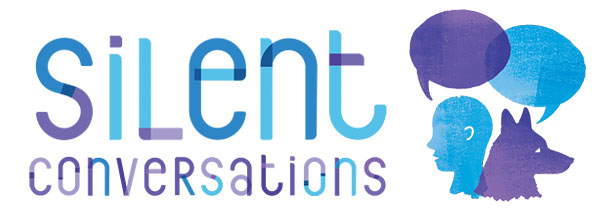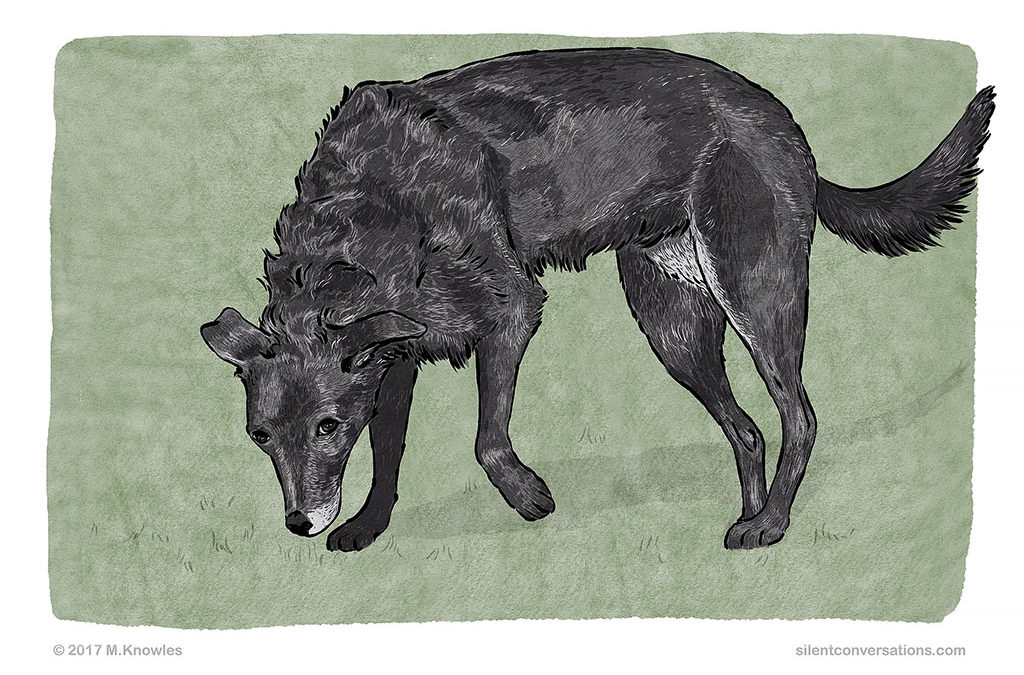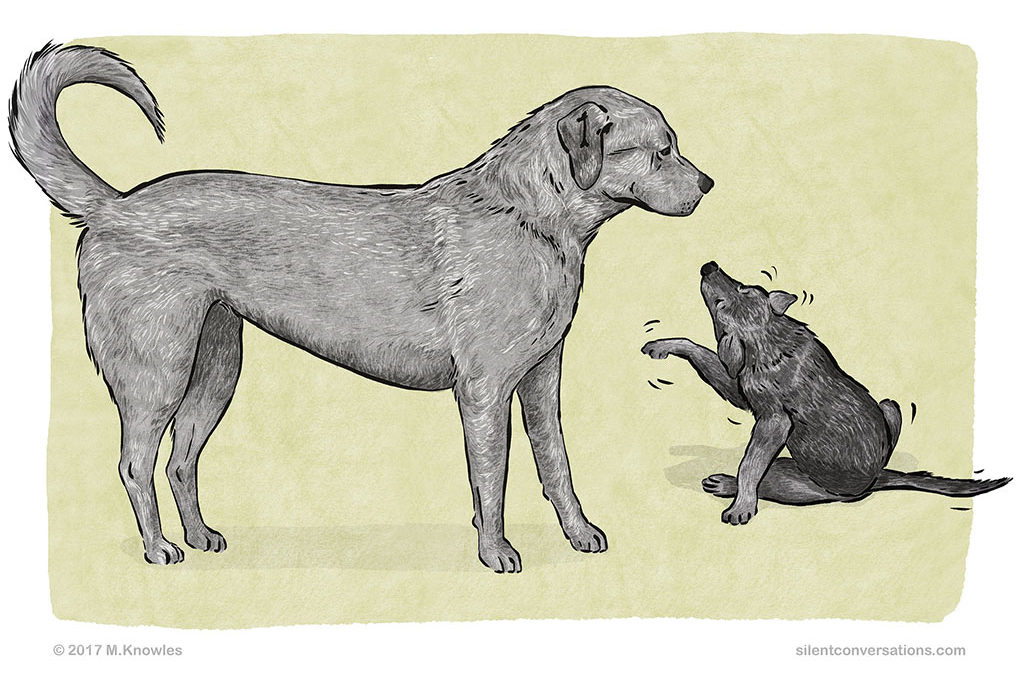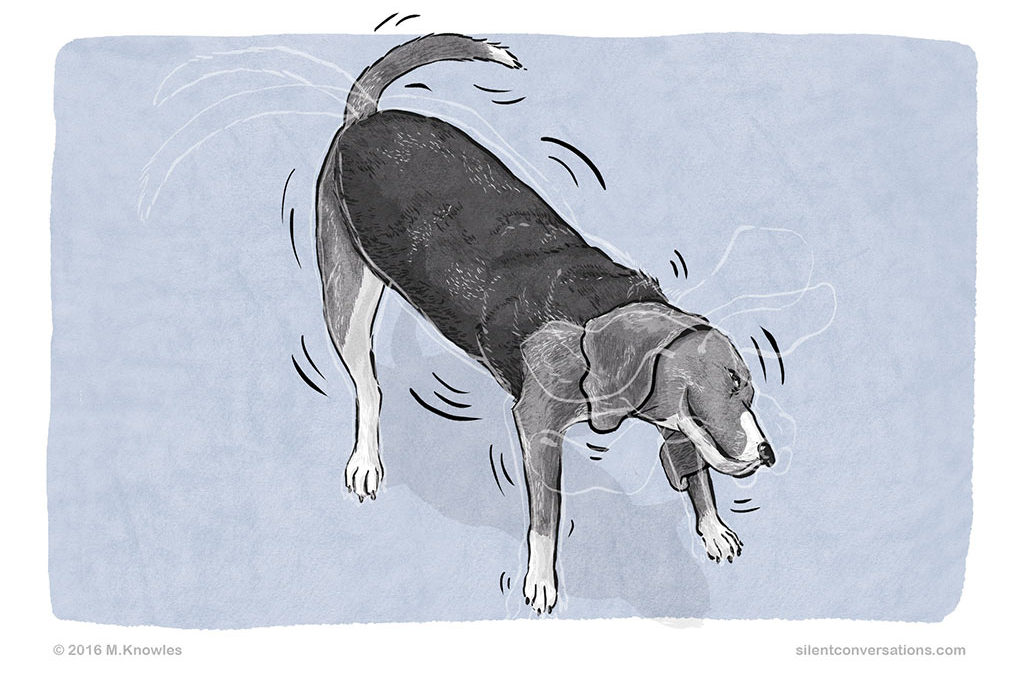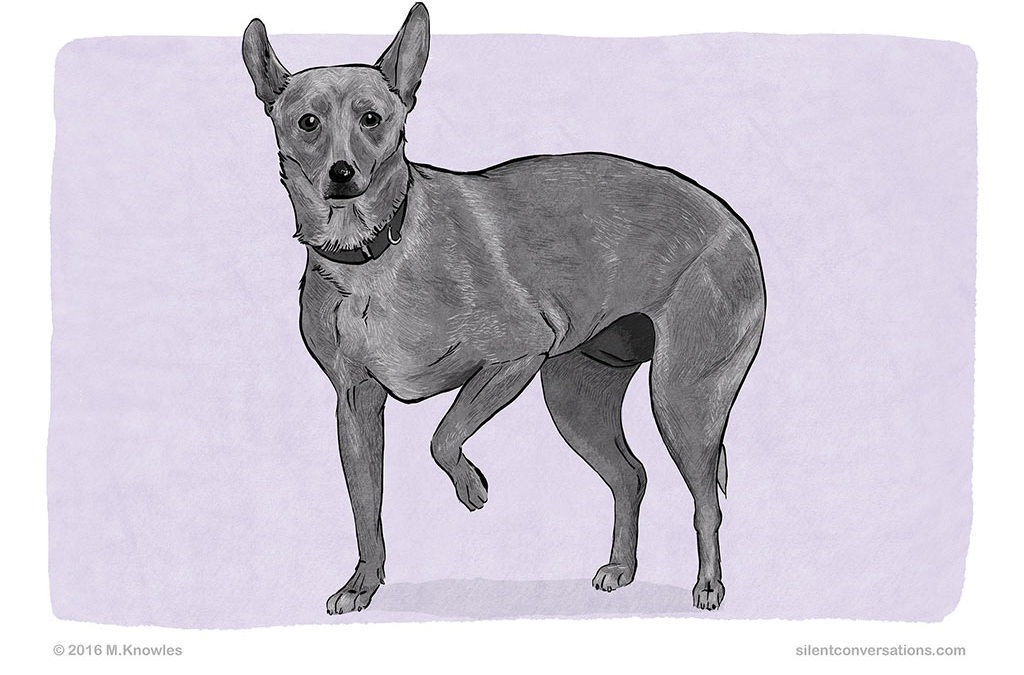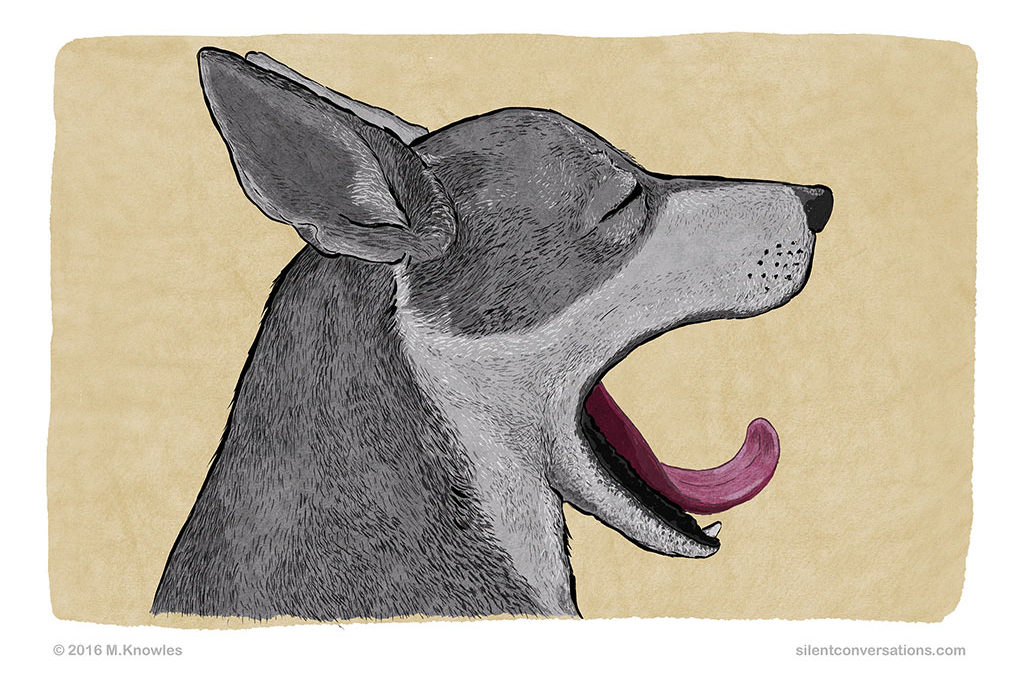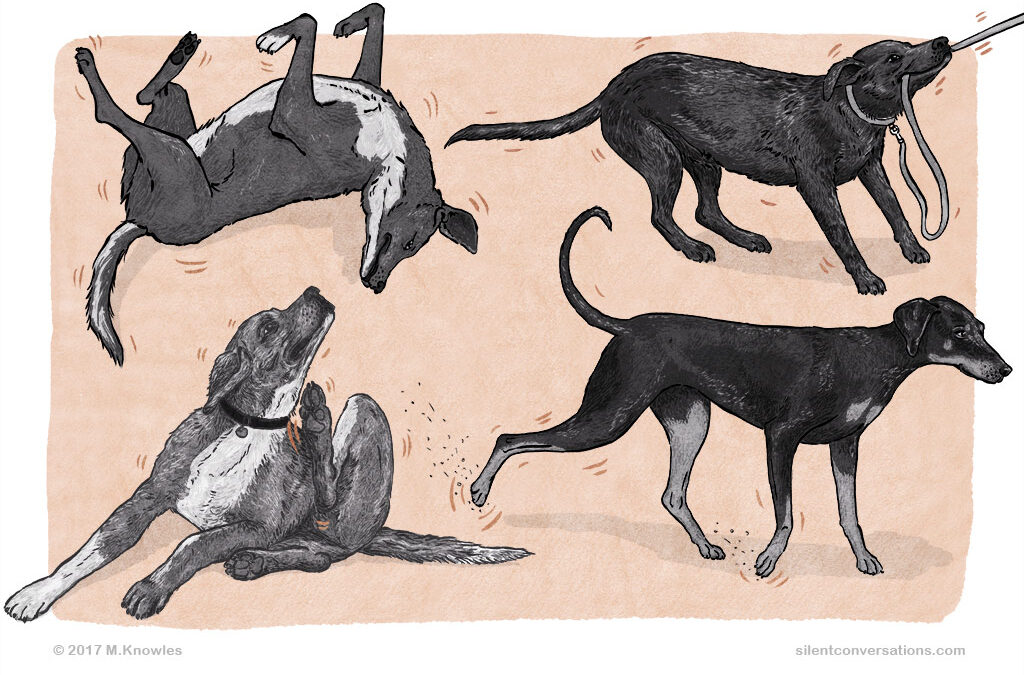
Displacement behaviour in dogs
Displacement behaviour in dogs
Displacement behaviours are normal behaviours that seem displaced and are displayed out of context. They occur when the dog is experiencing conflicting emotions and attempting to deflect stress, uncertainty, anxiety or frustration. Some of the possible causes of displacement behaviour could be tiredness, stress*, overstimulation or a response to pressure. These behaviours are a reflection of the dog’s inner state rather than conscious communication. However, depending on the context and interpretation, some dog body language that is classified as displacement behaviour could also be used as direct communication, or could be classified as unconscious communication/response due to stress. Therefore it is vital to observe all body language displayed, circumstances, individuals involved, and environment before offering interpretations.
The particular body language that is used for communication or could potentially be classified as displacement behaviour, depending on interpretation, includes sniffing the ground, a shake off, a lip lick, and a yawn. I classify the lip lick and yawn as lower level displacement behaviours and very rarely refer to them as displacement. My preference is to interpret them as a stress response in certain contexts. I have chosen to add them to the list as some dog behaviour professionals may classify them as displacement, depending on the context.
Here are three differing interpretations of a lip lick, depending on context: A dog may give a few lip licks as an unconscious stress response if he feels uncomfortable, for instance if he is sitting at a vet’s office. Alternatively, a dog may directly communicate discomfort or try to calm the situation down by offering a lip lick as a calming signal to the person/dog he is interacting with. The lip lick can also be seen as displacement behaviour due to some internal conflict; for example, a dog is given the cue to ‘stay back’, and when asked to do so, he offers a lip lick. He may be offering the lip lick due to feeling conflicted because he would rather move forward. Some may interpret this as displacement and others may interpret it as a slight stress response.
If displacement behaviours are occurring frequently, it is worth keeping a 24-hour diary noting the daily activities of your dog, including rest, and the occasions when the displacement behaviour occurred. Keeping a diary will provide an overview of daily routines and might help you to see if there is a particular event, sequence or routine that sets off the behaviour. Maintaining accurate notes in the diary of your household and dog’s activities gives an opportunity to analyse and spot areas that may be out of balance. If you are experiencing serious displacement behaviours, it is best to consult a qualified dog behaviourist, who will assess the situation, give you an accurate overview, and provide ongoing support.
Here is a list of some of the possible displacement behaviours:
- biting the lead
- scratching
- mouthing (mouthing peoples hands, legs or clothing)
- mounting/humping
- picking up things to rag
- chewing
- rolling on the ground
- licking or chewing body parts
- dog checking his/her uro-genital area
- hyped-up running/zooming around
- hyperactivity
- scratching the ground with back legs
- sniffing the ground
- shake off
- lip lick
- yawn
Here are a few examples of situations where some dogs have shown displacement behaviour:
-
Two people are chatting on a path in the park. The woman who is chatting to her friend has her dog standing next to her on lead. A jogger runs down the path directly towards them. The dog does a lip lick followed by a head turn. He then turns his whole body away from the approaching jogger. The woman is distracted by her conversation with her friend and does not realize her dog is communicating discomfort through body language. After the jogger passes, the dog suddenly drops to the ground and starts rolling on his back. The woman is not aware that the fast, direct approach of the jogger has caused her dog to displace some anxiety by rolling. She thinks her dog is just being silly.
-
A dog in a shelter picks up his blanket and starts ragging, spinning the blanket around furiously whenever the volunteers pass his kennel with dogs they are taking out for a walk. There is a lot of activity, with dogs passing quickly down the corridors and past the kennels, causing all the dogs to bark. All this noise and frenetic atmosphere affects the stress levels of this shelter dog, causing the dog to show displacement behaviour.
-
An adolescent dog goes on a walk with her guardian. They do a long walk through the woods, as the guardian has read that burning off energy helps to keep a dog calm. His young dog seems to struggle to settle in the evenings. Halfway through the walk, the young dog starts biting and tugging the lead. It really becomes difficult for the guardian to hold the lead, and if his hand is in the way, the dog mouths it. This is frustrating for the guardian, who expected a calm walk in the woods. Instead, these longer walks seem to have the opposite effect, with his dog appearing hyper and exhibiting this new mouthing behaviour. Perhaps this walk is not suitable for this dog, or there may be other factors contributing to this behaviour. It depends on the individual, and a further holistic investigation would be necessary to assess the influences for the displacement behaviour.
-
A dog that has suffered abuse in the past is taking time to acclimatize and build trust with new people. He is normally introduced to new people by known people. If he is left alone too soon or introduced too fast to strangers, he starts humping their legs and then mouthing people’s arms, showing his anxiety.
-
A person has let her dog off lead in the park. She looks at her watch, realizing she is running late and tries to call her dog quickly in order to leave the park. He takes his time coming over, and she becomes frustrated and calls again, raising her voice in her frustration. Calling the dog’s name more loudly does not seem to help, as he has now stopped and is sniffing the ground. This might be a calming signal offered by the dog because he is not comfortable with the person’s tone of voice and he wishes to calm his guardian. Or it could be displacement behaviour in response to the pressure the dog might be feeling from his guardian.
-
A few people are visiting for a social occasion. The people have just arrived and are gathered in the doorway, exchanging greetings joyfully. The family dog walks off to his toy bucket and picks up a teddy bear. He starts walking around with it in his mouth and shakes it about. The dog may be feeling some unease due to the activity of people arriving and the noise this has caused. He is displacing some of the anxiety/excitement on his toys.
-
A puppy is attending puppy class with her guardian. As the class progresses, the puppy’s movements get faster. She is panting, does a few lip licks, and keeps sitting frequently to scratch her neck with her back leg. The guardian is feeling a little frustrated as it is difficult to keep the puppy’s attention for long. The puppy may be experiencing some stress and may find this class a bit overwhelming. She is showing some displacement behaviour by scratching her neck frequently. The dog trainer asks the guardian to step out of the class for a few minutes and let the puppy have a sniffing break outside. The scratching behaviour seems to subside as the puppy potters around outdoors, away from the activity of the hall.
-
While walking in the suburbs with his guardian, a dog that is uncomfortable meeting unknown dogs is approached by an off lead dog. This dog slows her pace and curves round the dog with the guardian. Both dogs freeze for a couple of seconds with their bodies facing three quarters away from one another and their heads turned away. The dog that is not comfortable seems quite tall; his ears are up, and he does quick head turns. The off lead dog tries to slowly curve round the rear end of the uncomfortable dog, but he jumps away quickly, still facing the off lead dog, and then freezes whilst wagging his tail very quickly. She tries again and he jumps away a little further. She realizes that he is uncomfortable and decides to walk away. This gives the guardian an opportunity to walk away with her dog too. After the guardian has walked away with her dog, he stops and turns toward the off lead dog, which is now in the distance. He scratches the dirt with his back legs and lets off a few barks. The dog may be displacing some of the tension from this unexpected meeting by scratching. Normally the action of scratching with back legs would be used when scent marking and when going to potty but in this context the action seems displaced.
These are just a few examples; there may be many more. As discussed below, interpretations such as the above examples should not be attempted without careful observation and consideration of all aspects of the situation.
Want to learn more about the potential effects of stress on dogs?
To understand the possible effects of stress, I would recommend reading ‘Stress in Dogs’ by Martina Scholz & Clarissa von Reinhardt. Links to the book can be found on the resources page.
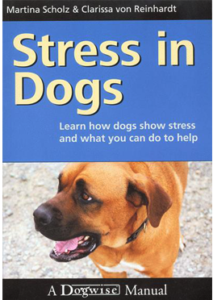 The book gives an overview of the physiology of stress and explains some of its symptoms and how they can manifest as behaviour or health issues. The main section includes a comprehensive survey assessing the living conditions of 224 dogs. Interestingly, most of the participants in the survey had more than average involvement with dogs and were practicing dog trainers or veterinary advisors. The survey really highlights the patterns that start emerging and provides an insight into areas that may be out of balance. You are able to take the survey yourself and compare your results to the survey results and averages. Dispersed through the book are case studies, which help to expand your understanding of how dogs show stress. It is a fantastic book that explains the scientific aspects, gives a comprehensive overview of the symptoms and effects of stress on your dog, and helps you make all the relevant connections on the topic.
The book gives an overview of the physiology of stress and explains some of its symptoms and how they can manifest as behaviour or health issues. The main section includes a comprehensive survey assessing the living conditions of 224 dogs. Interestingly, most of the participants in the survey had more than average involvement with dogs and were practicing dog trainers or veterinary advisors. The survey really highlights the patterns that start emerging and provides an insight into areas that may be out of balance. You are able to take the survey yourself and compare your results to the survey results and averages. Dispersed through the book are case studies, which help to expand your understanding of how dogs show stress. It is a fantastic book that explains the scientific aspects, gives a comprehensive overview of the symptoms and effects of stress on your dog, and helps you make all the relevant connections on the topic.
What is meant by stress*?
When I mention stress, this does not necessarily imply negative emotion. I mean stress in the physiological sense. So certain body language signals can mean the dog is feeling some sort of emotional discourse. This discourse could range from positive to negative emotion. Both excitement and fear could have similar effects on the body, with various hormones being released and activating the sympathetic nervous system. The dog may be feeling uncomfortable/fearful or it could also be excited about something. When analyzing stress in body language, it is worth noting the frequency and intensity of the various body language signals.
A few notes to consider when observing dog body language:
Observation before interpretation
Interpretations should be offered only once you have observed the complete interaction and taken note of the wider picture. To offer an unbiased interpretation of the body language, observe and take note of the situation, taking into account the dog’s whole body, the body language signals, and environment first before offering an interpretation. List all the body language you see in the order that it occurs; try to be as descriptive as possible without adding any emotional language. For instance, saying a dog looks happy is not descriptive and would be seen as an interpretation rather than an observation.
You could, however, list what you observe: ears to the side, eyes almond shaped, slight shortening of the eye, mouth open, long lips, tongue out, body moving loosely, body facing side-on, tail wagging at a slow even pace at body level.
From the observation, I could interpret that the dog seems relaxed or comfortable. I still prefer to say relaxed rather than happy, as I feel you will truly never know exactly what the dog may be feeling on the inside emotionally. It is quite likely the dog may be feeling happy, but I prefer to comment on how the dog is behaving in response to the situation rather than presuming internal emotional states.
The importance of viewing body language within context
Interpretations can vary depending on the context. It is possible for certain body language to be used in different contexts and have subtle differences in meaning within those contexts. Individual body language signals should not be observed in isolation; the wider picture should be considered. Take note of what the dog’s body as a whole is saying. Keep in mind each dog is an individual with varying skills and experiences. What may be typical for one individual may not be for another. In order to observe body language in context, consider the following: the situation, body language signals, the body language expressed by all parts of the dog’s body, environment, and individuals involved. It is worth noting how the body language changes with feedback from the environment or the other individuals interacting.
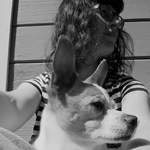
Martha Knowles
Author
My vision is to create a community of dog guardians who share their observations and interpretations of their dogs’ silent conversations. Hopefully, these experiences and stories will provide some insight into dog communication, which is often overlooked by the untrained eye because it is unfamiliar to humans. We are accustomed to communicating mainly with sound, so we are not attuned to the silent subtle gestures and body language used by dogs to communicate. If you take the time to observe, you will start to see these 'silent conversations' going on around you. My dream is for dog communication to become common knowledge with all dog guardians and as many people as possible. Surprisingly, there are still some professionals working in various dog-related careers who are uneducated about dog body language. Greater awareness of how dogs communicate will help to provide better understanding and improve the mutual relationship between dogs and humans. This will promote safer interactions between our two species and hopefully remove some of the expectations placed on dogs within human society. I would like dog guardians to feel empowered with their knowledge of dog communication so that they can be their dogs’ advocates and stand up for themselves and their dogs when it really matters.
